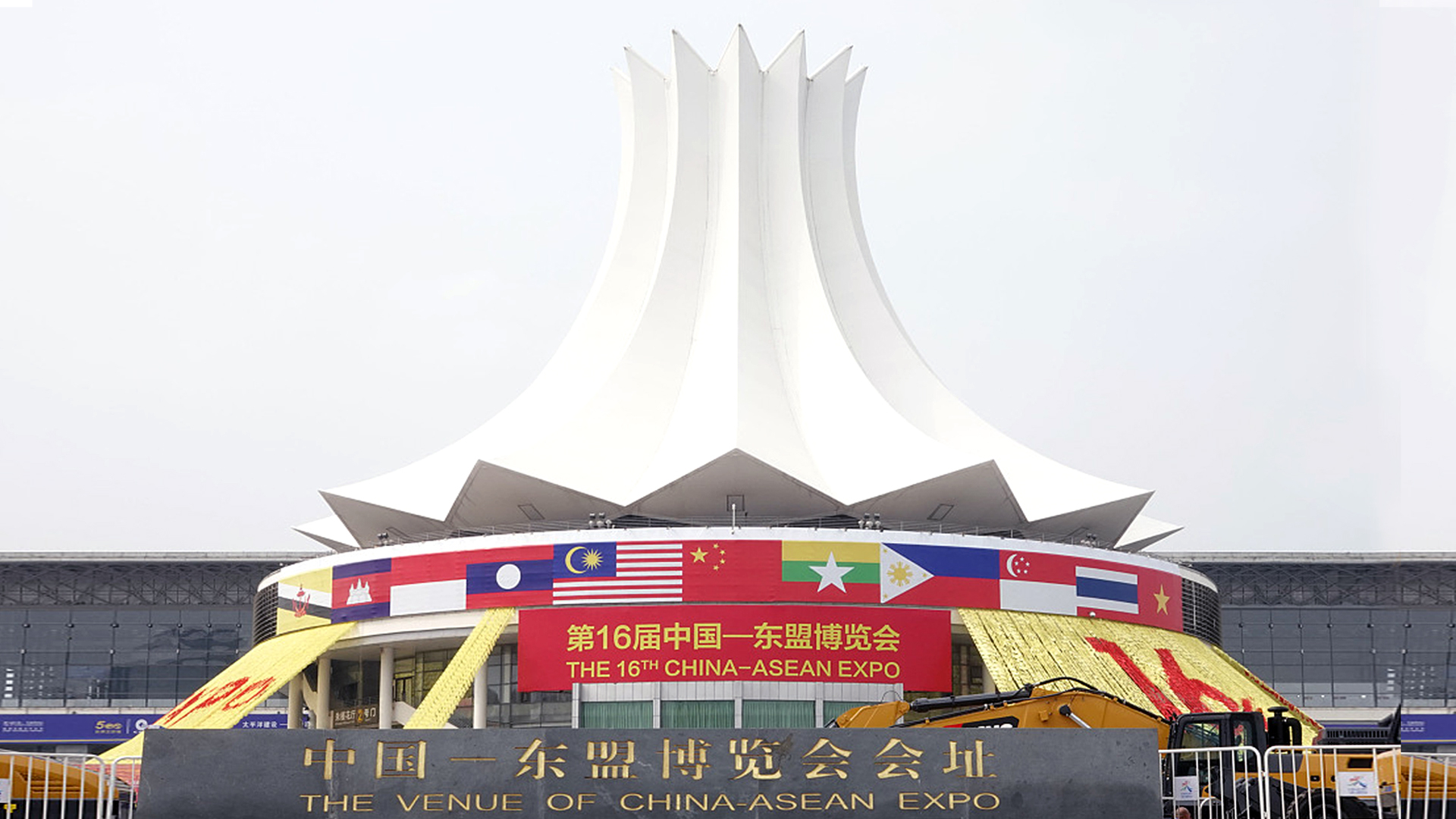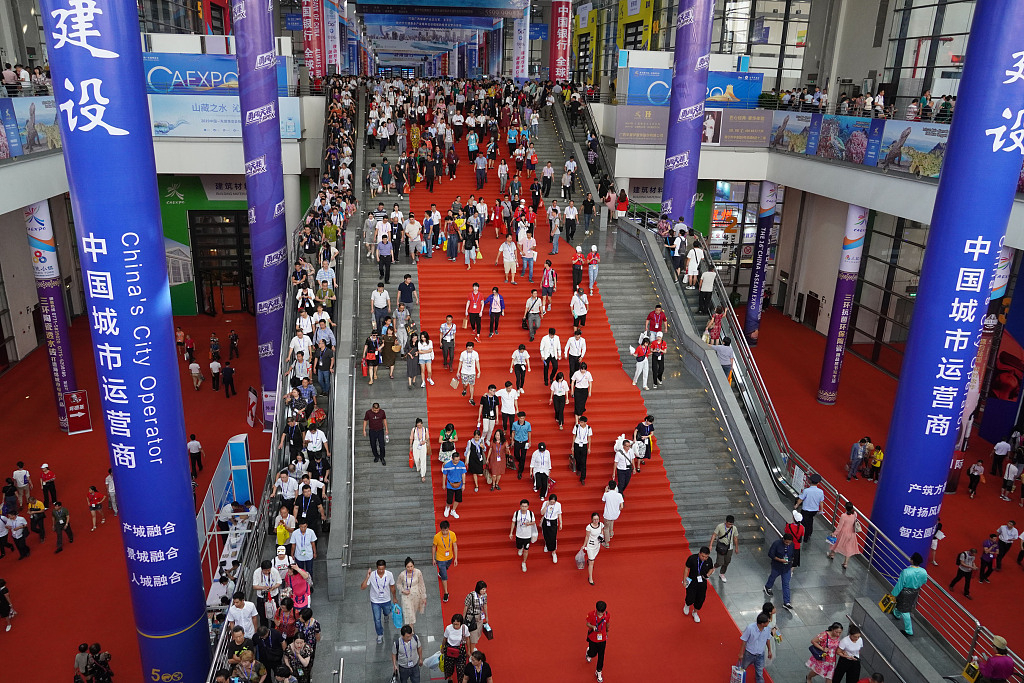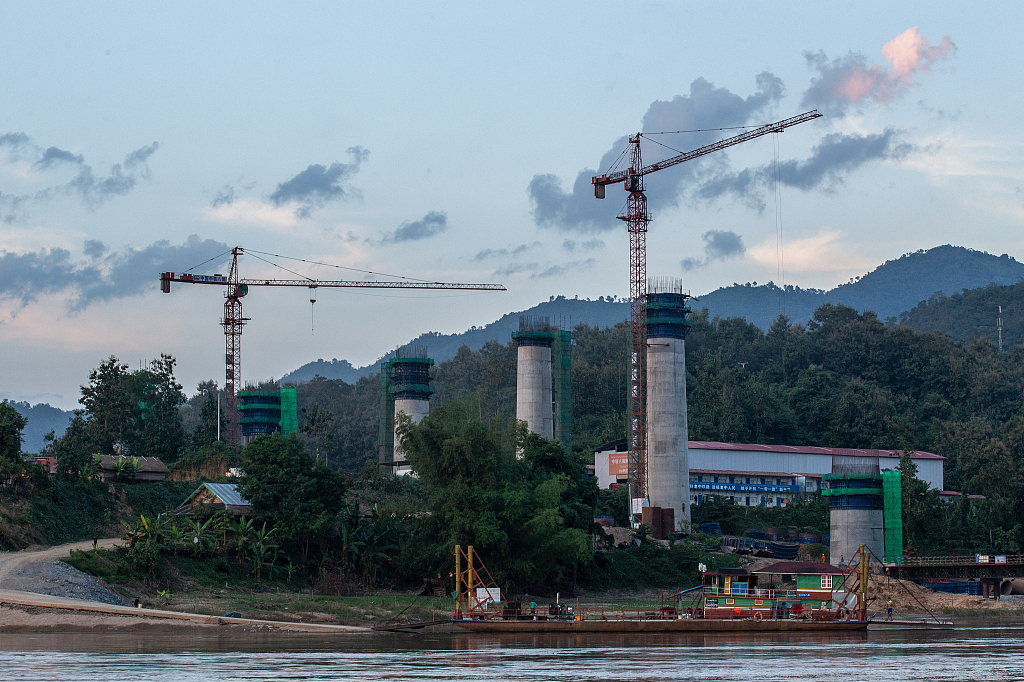
Editor's note: Rabi Sankar Bosu is an Indian freelance contributor to Chinese media outlets who writes about Chinese politics, social and cultural issues and China-India relations, with special interest in the Belt and Road Initiative. The article reflects the author's opinions, and not necessarily the views of CGTN.
The 16th China-ASEAN Expo (CAEXPO) under the theme "Building the Belt & Road, Realizing Our Vision for a Community of Shared Future" is being held in Nanning, capital of south China's Guangxi Zhuang Autonomous Region. Indonesia has been named as the Country of Honor for the second time at the 16th CAEXPO.
The theme clearly indicates that exhibitions and activities at the expo will further work on the building of the China-initiated Belt and Road Initiative (BRI), creating new opportunities for mutual benefits and common prosperity for all stakeholders amid rising global trade protectionism.
Needless to say, this year's four-day expo, which opened on September 21, has given an opportunity for the 10-member Association of Southeast Asian Nations (ASEAN) and other countries along the Belt and Road routes to barter their trade and investment collaboration with the world's second largest economy, China, while reinforcing their support for the BRI which is dedicated to the development of all countries across the world.
Since ASEAN countries are a key area in BRI construction, Chinese Vice Premier Han Zheng in his speech at the CAEXPO opening ceremony quite rightly said, "China is willing to work with ASEAN countries to pursue a higher level strategic partnership and build a closer community with a shared future," with the master plan on ASEAN Connectivity 2025 under the aegis of the China-ASEAN Strategic Partnership Vision 2030 which was adopted at the 21st China-ASEAN leaders' meeting in Singapore in November last year.
The expo comes at a time when the country is celebrating its 70th founding anniversary. However, the ongoing event is taking place at a critical time when the spirit of economic globalization and free trade has recently encountered opposition in the West.
Plainly speaking, since Donald Trump took over the White House as U.S. President, he has escalated trade conflicts with China, some ASEAN countries and India. Even the World Trade Organization (WTO) is facing an existential threat under Trump.
As such, the exclusive event along with the 16th China-ASEAN Business and Investment Summit (CABIS) offers a golden opportunity to governments, stakeholders and industry to form a united front against U.S. protectionism in order to sustain the momentum of trade.

The 16th China-ASEAN Expo is held in Nanning, Guangxi Zhuang Autonomous Region, September 21, 2019. /VCG Photo
The 16th China-ASEAN Expo is held in Nanning, Guangxi Zhuang Autonomous Region, September 21, 2019. /VCG Photo
Despite the cold spell of the trade war between the world's two largest economies, this year's expo holds special significance, owing to the increasing number of participating enterprises from over 30 countries including ASEAN. A total of 2,848 enterprises are attending, up 2.4 percent from last year, demonstrating China's commitment to sharing its development opportunities with more countries around the world.
About 130 international companies from 20 countries, including Poland as a special guest, the Republic of Korea and Australia have marked a new high in attendance. Undoubtedly, the high-profile participation of international organizations is clear support for China's leading role in globalization and free trade.
Over time, China-ASEAN friendly relations and cooperation have entered a new stage with the care of leaders of the two sides and the support of people from all walks of life.
Since the inception of BRI, all the ASEAN countries with different backgrounds extended their full support for the mega-scale development concept with a clear vision to reap benefits from China's dazzling economic development for the common benefit of ASEAN people.
Notably, the China-led Asian Infrastructure Investment Bank (AIIB) has funded a total of 1 billion dollars in 10 projects in six ASEAN countries over the past four years as AIIB President Jin Liqun revealed at CAEXPO on September 22.
While critics of the BRI have called it as "China Threat," or "Debt Trap," the initiative has become a "Good Samaritan" project benefiting ASEAN countries and other regions. Critics and analysts in the West and Asia should take an unbiased look at the various major Chinese-backed infrastructure projects in Asia, Europe, Africa and elsewhere.
For example, within six years, Malaysia's East Coast Rail Link (ECRL), the China-Laos railway, the China-Thailand high-speed railway, Indonesia's Jakarta-Bandung HSR and China-Myanmar Gas and Oil Pipelines under BRI have brought great benefits to the local people's lives there, enhancing connectivity between China and ASEAN.
Launched in November 2004, the CAEXPO has been contributing a lot in boosting bilateral investment and trade. Bilateral trade has become an important and dynamic aspect of China-ASEAN relations.

The Ban Ladhan Railway bridge, a section of the China-Laos Railway built by the China Railway Group Ltd., stands under construction on the Mekong River in Ban Ladhan, Luang Prabang Province, Laos, October 18, 2018. /VCG Photo
The Ban Ladhan Railway bridge, a section of the China-Laos Railway built by the China Railway Group Ltd., stands under construction on the Mekong River in Ban Ladhan, Luang Prabang Province, Laos, October 18, 2018. /VCG Photo
China has been the biggest trade partner for ASEAN for ten consecutive years, while ASEAN has been the third biggest trade partner for China for seven consecutive years. According to China's official data, the mutual trade volume between China and ASEAN countries reached a record high of 587.87 billion U.S. dollars in 2018, up 14.1 percent year on year.
Surely the bilateral trade volume indicates that China-ASEAN relations have been moving into the fast lane of development weathering Donald Trump's trade tariffs.
Over the past 16 years, "The CAEXPO and the CABIS have become landmark events of Guangxi and an important platform for bilateral opening-up between China and ASEAN," just as President Xi Jinping said about the events in April 2017.
Undoubtedly, the two events have become a platform for exploring innovative approaches to promote trade, investment, joint ventures and strategic market tie-ups promoting a win-win trajectory of the China-ASEAN partnership.
(If you want to contribute and have specific expertise, please contact us at opinions@cgtn.com.)